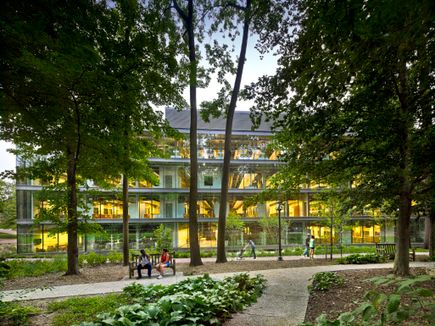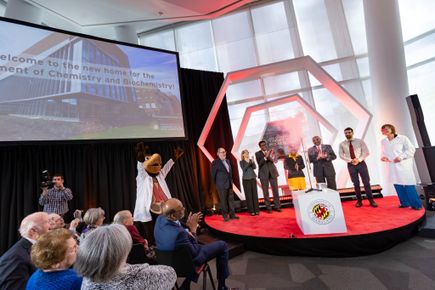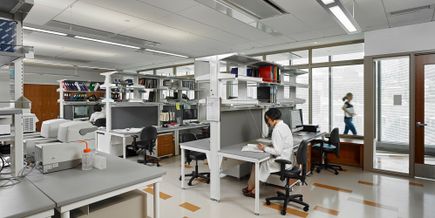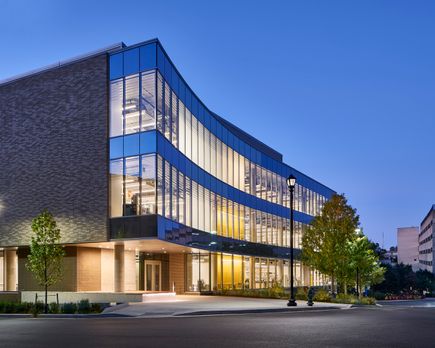Designing Laboratories to Attract Researchers
Share
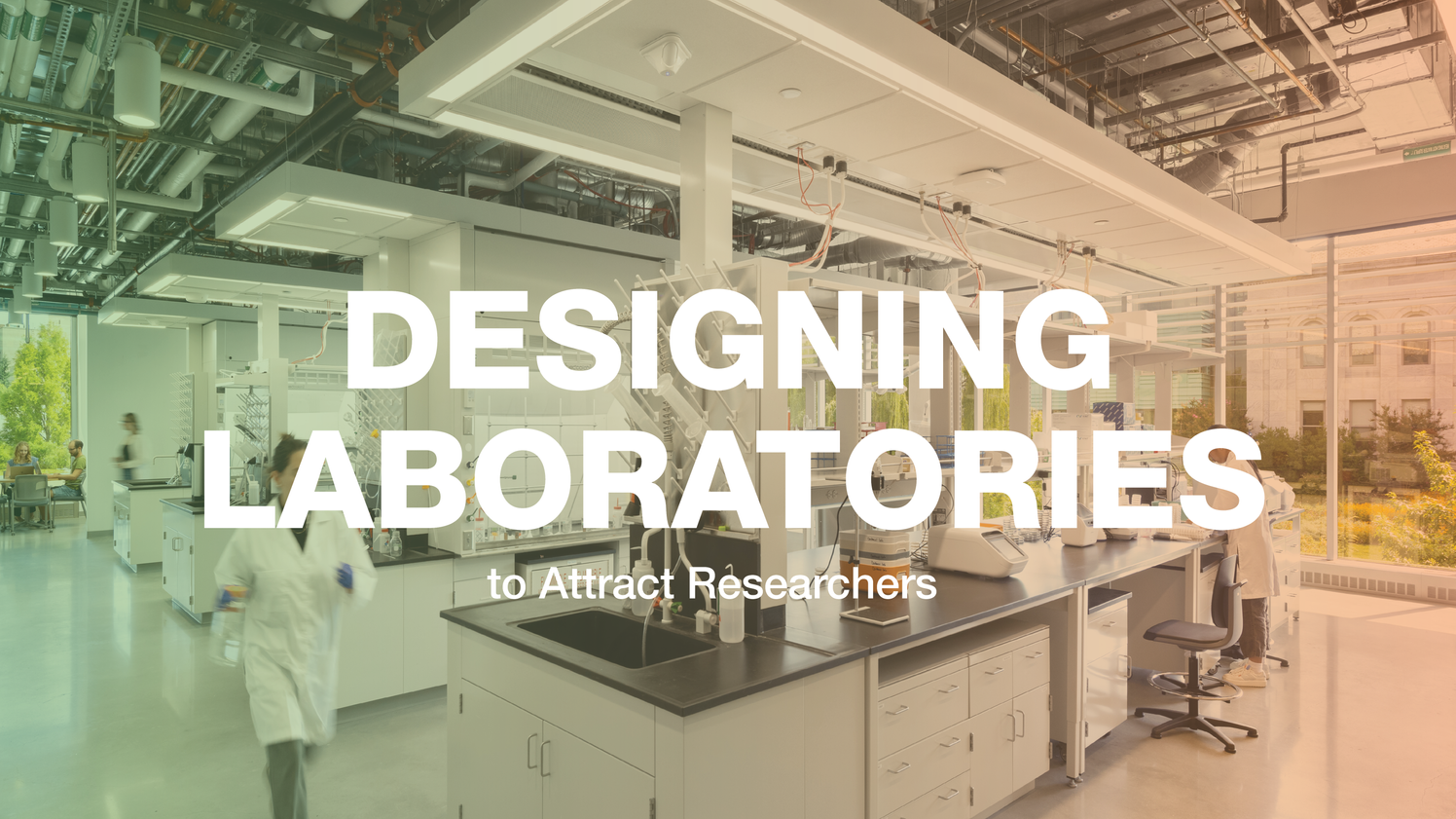
How can a building help recruit and retain top talent?
Leading research institutions recognize that cutting-edge laboratory design is more than a backdrop—it’s a catalyst for groundbreaking innovation. An architectural “wow factor” is important, but institutions also need to focus on providing cutting-edge technology and creating a community of mentors, partners, and collaborators to attract and retain the visionary minds who drive scientific progress.
"Our approach to supporting recruitment and retention is to design for the research, the community, and the individual."

Finding Focus
Different scientific disciplines require different types of labs with different specifications. For chemists, this means a suitable number of adequately sized fume hoods. For physicists, it’s a lab space with minimal vibration and low electromagnetic interference. The more we concentrate on specific research, the more tailored our solutions become.
While focus is important, sometimes we discover that the facility requires a multidisciplinary approach. In these cases, we design labs to support the identified focus and then work with institutions to provide a blend of additional space types to support other types of research collaborators. For example, on the University of Maryland, College Park Chemistry Building, during design, the initial focus was on materials science chemistry, but, once we were further into the project, we found a high degree of collaboration and crossover with the quantum physics group. In response, we included a mix of quantum labs in the basement.
Cultivating Culture
Lab facilities do more than provide space—they shape the working methods and culture of researchers. A new building or renovation presents a unique opportunity to define or transform departmental and lab cultures. Architecture can play a pivotal role in supporting and reinforcing culture. We collaborate closely with stakeholders to craft spaces that align with and amplify the cultural expectations of each research community.
Research has shown that the closer collaborators are physically located, the higher the quality of the research they produce. Therefore, we advocate for lab members to be grouped together, rather than split between floors or across a campus. Open labs foster the free flow of ideas and resources across groups. Any barriers to connection that we break down in design can improve the quality of future research.
Researchers want to be somewhere they can see spending the rest of their careers, so creating comfortable, daylight-filled spaces with seamless connections to nature and accessible socialization areas is imperative. In our designs for facilities such as the University of Rhode Island’s Fascitelli Center for Advanced Engineering, Ballinger introduced large expanses of glass walls to allow daylight into labs. At the University of Michigan, we placed an atrium in the center of the Kinesiology Building to bring light and activity to the heart of the facility.
Developing a Program
Once general research themes and a project vision have been identified, we gather input on how to realize it. In the absence of users – when designing a brand-new building, for example – recruiting an advisory committee of “surrogate” researchers is an effective way to predict future users’ needs. These committees may be comprised of existing faculty or researchers in the same field(s) at other institutions. We engage them for their expertise, encouraging them to think broadly about lab criteria and characteristics typically required for the work of future researchers, and not simply design their own lab.
Benchmarking
Given the competition for talent, understanding how peer institutions are approaching lab design is crucial to the design of a new building. Typically, benchmarking is data-focused, including metrics like lab square footage per principal investigator, lab support ratios, and research team sizes. This type of information is directly applicable to program development. However, benchmarking can also help planning committees and surrogate users gain a common understanding of qualitative factors such as lab-workplace adjacencies, flexible fit-out systems, and architectural features. Benchmarking visits create a shared understanding that helps facilitate decision-making throughout the design process.

Establishing Research Cores
A key to recruiting researchers is providing access to instruments, facilities, and expertise they wouldn’t have otherwise. Establishing research cores with specialized equipment and staff moves resources out of individual labs and into shared labs. This allows for access to equipment by a broader range of researchers, the pooling of equipment resources, and the hiring of specialized staff for operating and maintaining the equipment. It also invites collaboration and cross-pollination across fields, which can be attractive to new researchers seeking to build community.
Anticipating Challenges
Even if an institution doesn’t know the specific sub-specialties of the researchers it hopes to attract, if the research scope is identified, we can prioritize developing answers to potential problems before they arise. For instance, if a lab envisions using large quantities of hazardous chemicals, we reserve space on lower floors to ensure the code allows adequate hazardous material quantities to support the research. If specialized instruments need low vibration spaces, we reserve space with slab-on-grade for instrument stability. Foregrounding these types of considerations gives the building form and organization.

Anticipating the future of research requires staying at the forefront of technological advancements, benchmarking against peer institutions, and designing research environments that are efficient, comfortable, and future-flexible. Our design approach balances specificity with flexibility, ensuring that spaces can accommodate a wide range of scientific innovations throughout the life of a building.
New researchers are a catalyst for creating high-caliber research, but they do this work as part of a community of like-minded collaborators. Through our research-intensive design process, we create spaces that support our clients’ recruitment and retention efforts and the next generation of scientific innovation.
"We don't just design buildings; we are a partner in designing research communities."
